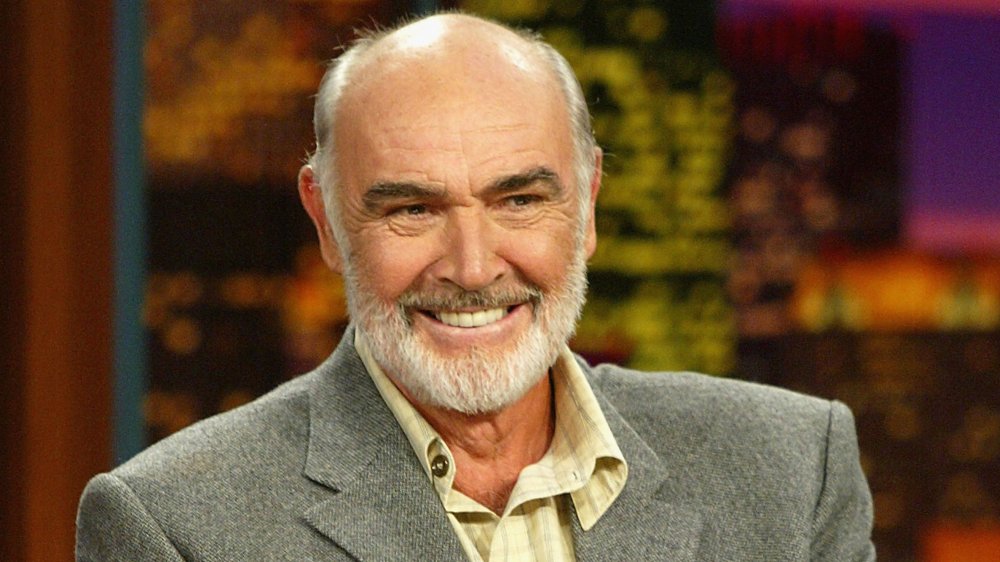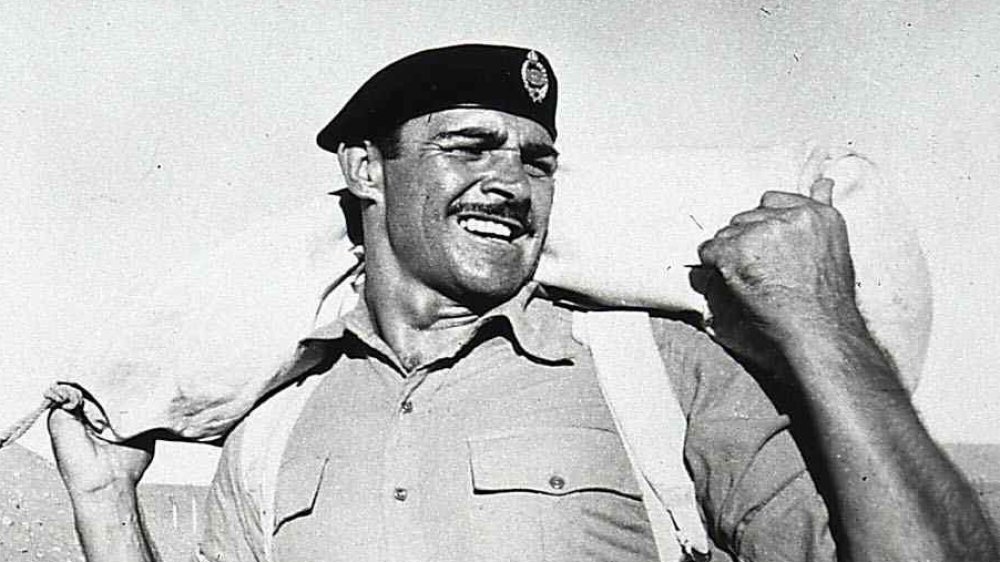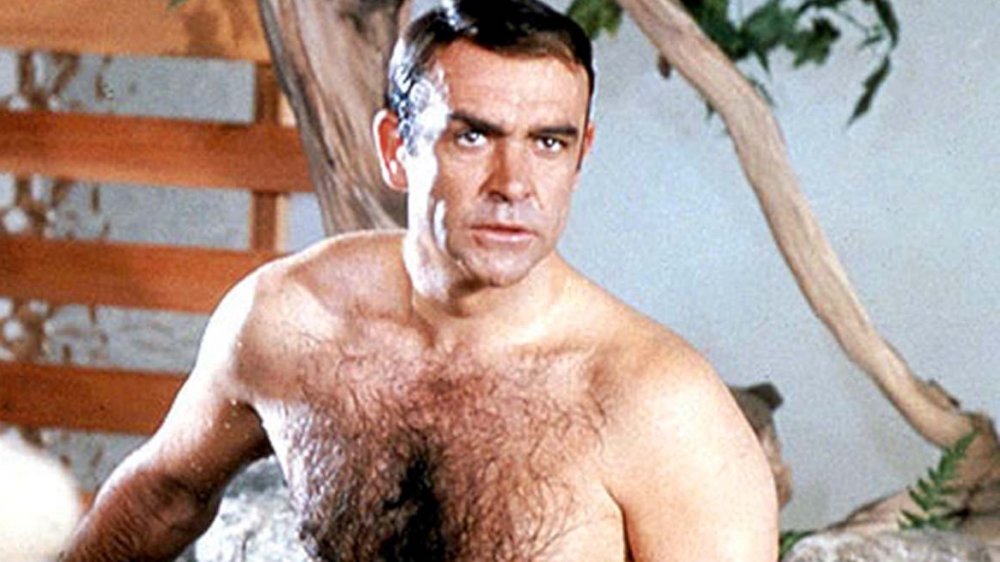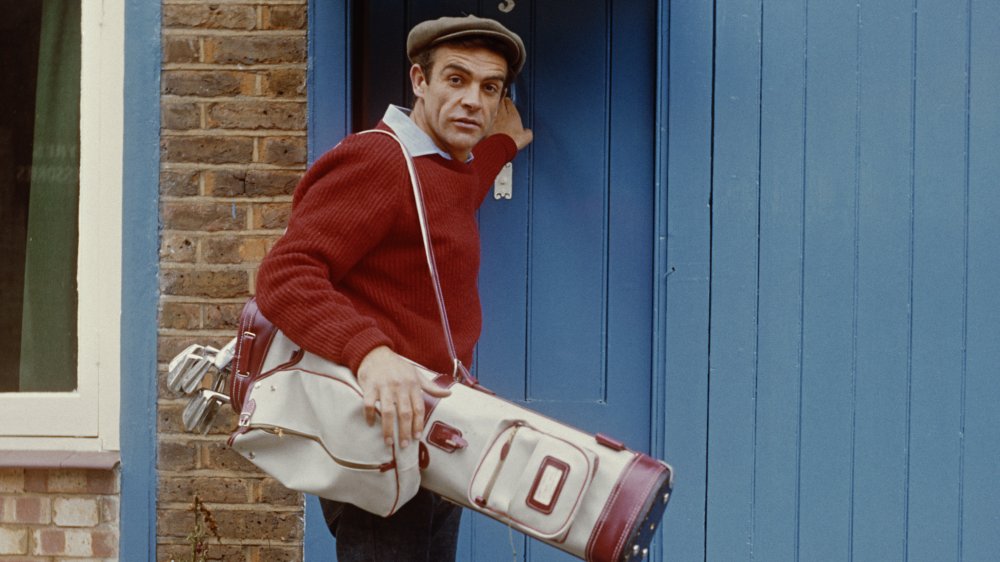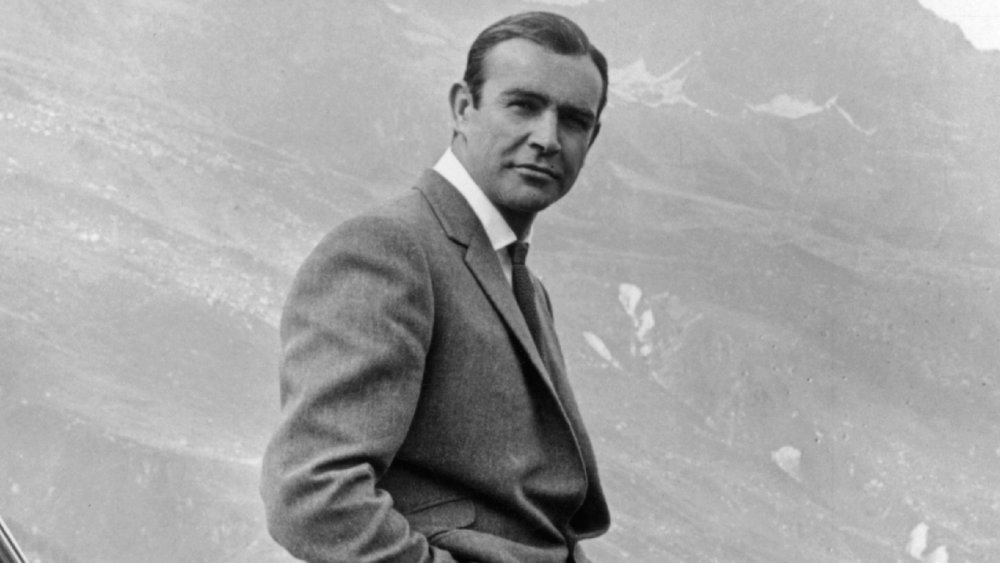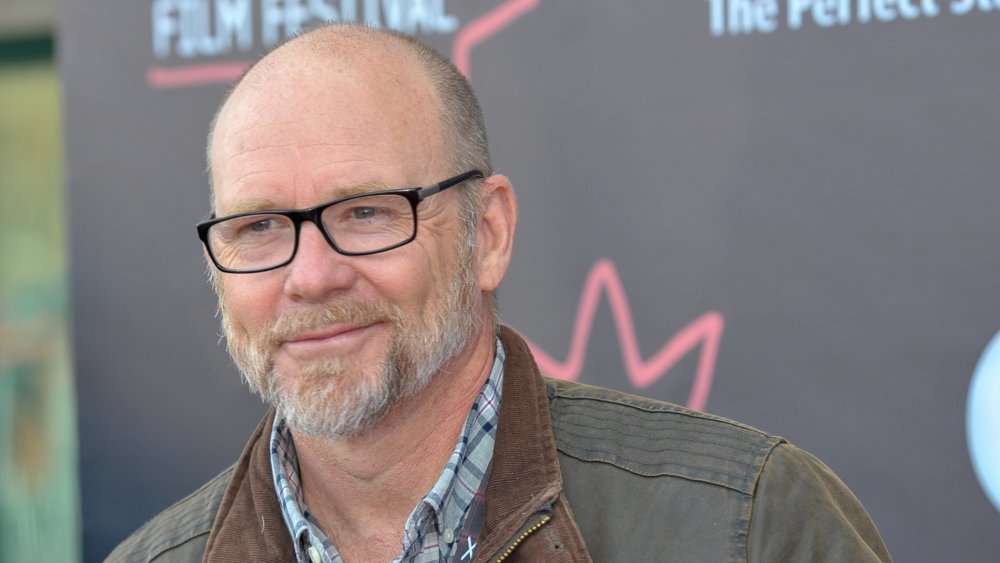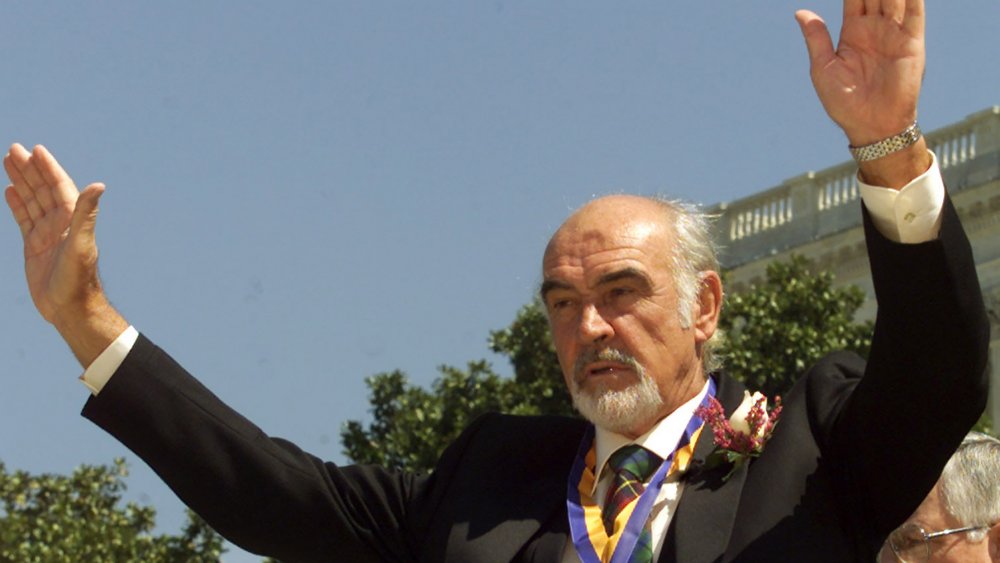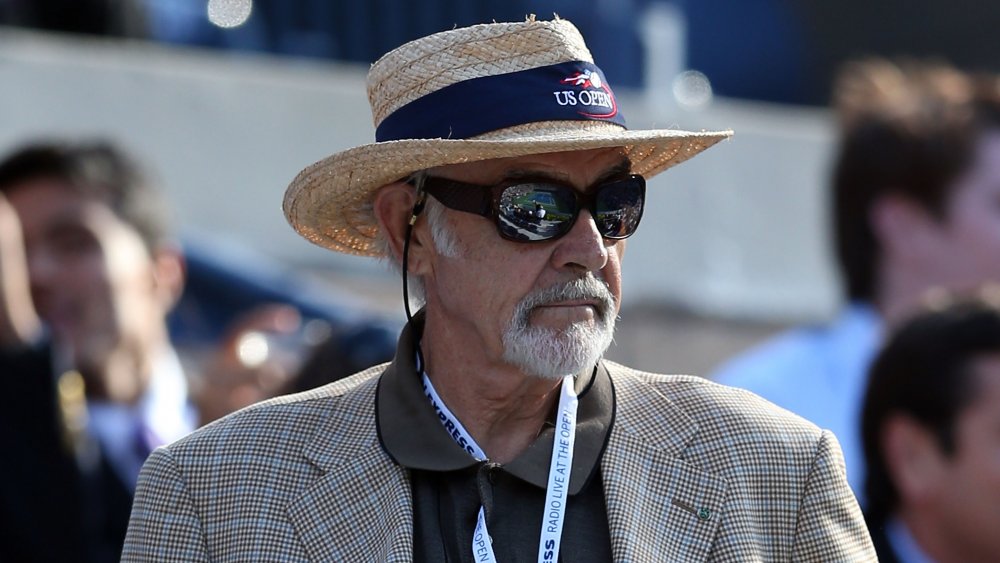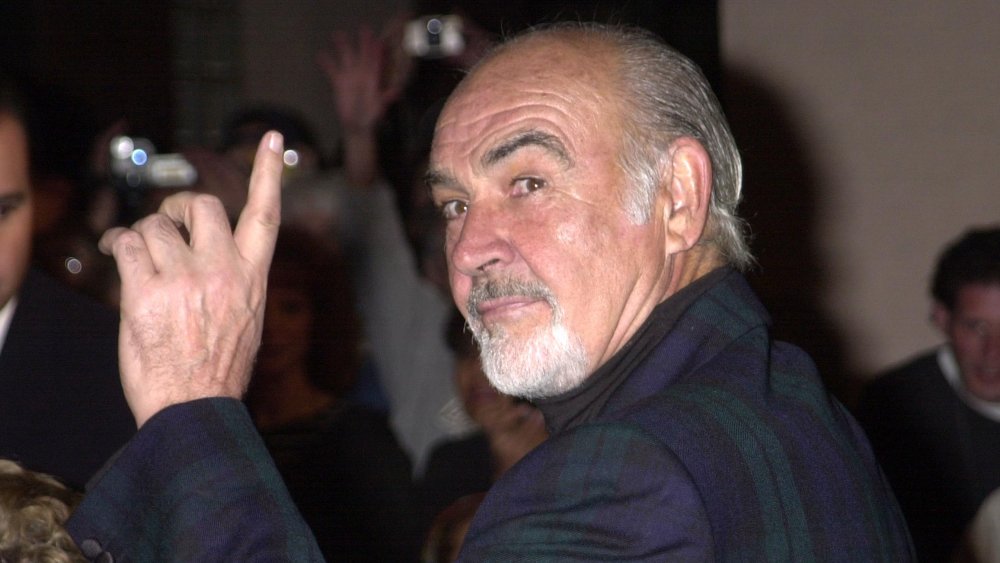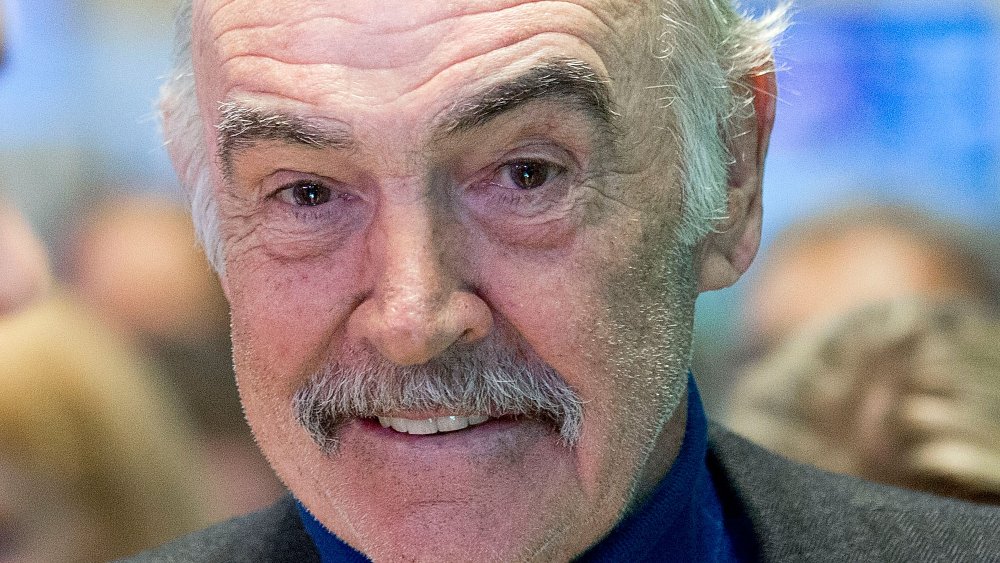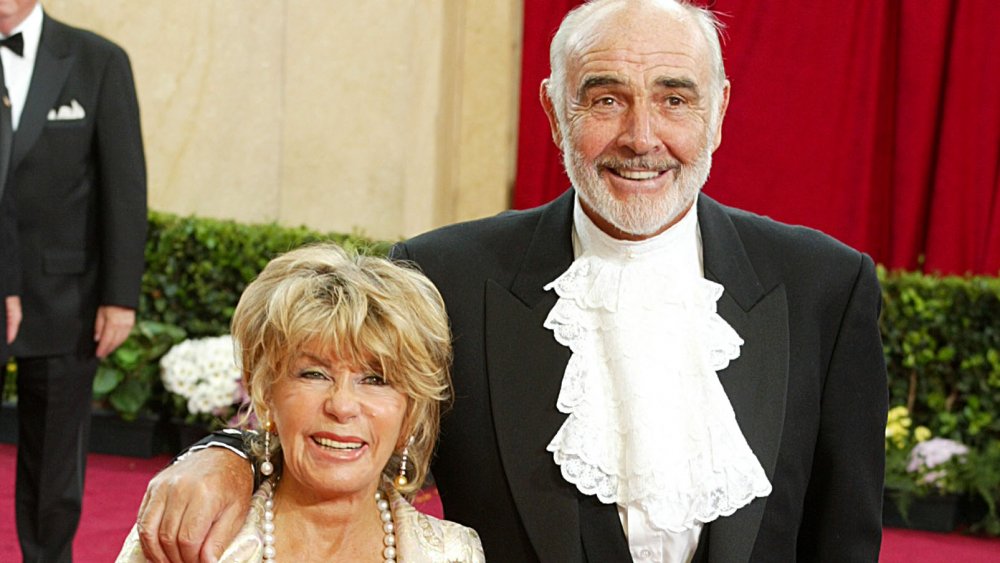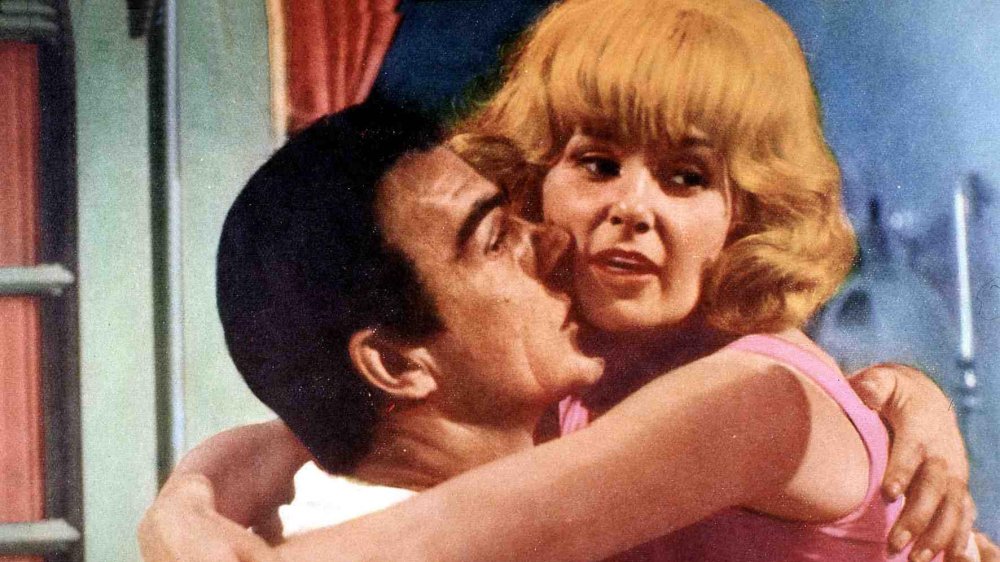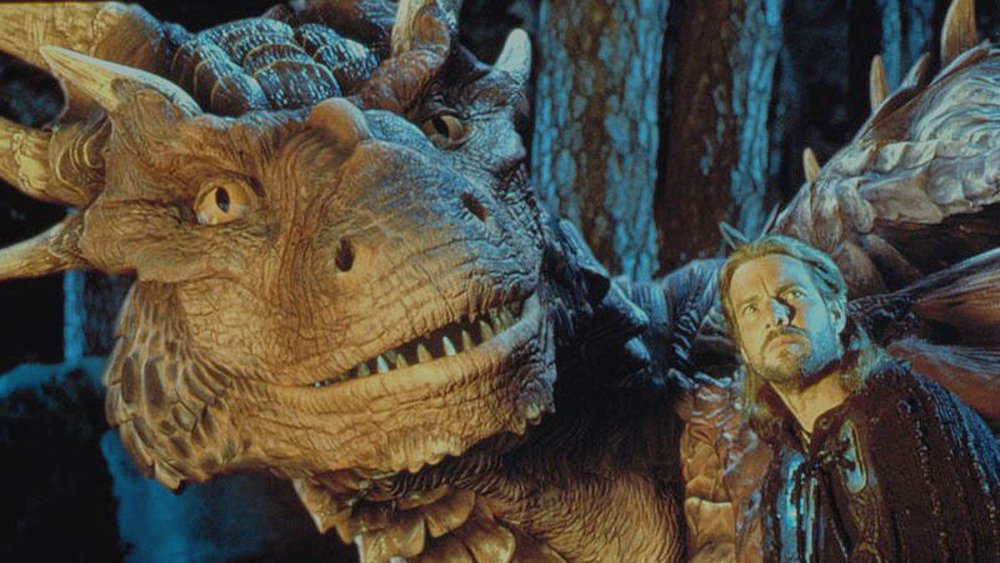The Untold Truth Of Sean Connery
The world of cinema is peppered with stars whose reputation precedes them, celebrities who are so famous that their name serves as a shorthand for a character, franchise, or trope. They are legends in their own time, seemingly beyond the grasp of mere mortals. Sean Connery, with his rumbling Scottish brogue, was one such actor. Connery hit the big time when he took on the mantle of Ian Fleming's famous spy, James Bond. For decades, and to some even today, he's been touted as the best of the Bonds, and the role afforded him a plethora of later opportunities. However, even though just about everyone recognizes his name and face, the average moviegoer probably hasn't delved too deeply into Connery's personal life.
The actor lived to be 90; according to the BBC, on October 31, 2020, Sean Connery died in his sleep in the Bahamas and "had been unwell for some time." there's a lot of that life to explore, marked by both the aspirational and the less appetizing aspects. This is the untold truth of Sean Connery.
Sean Connery was in the Navy
Born to a working class family in Edinburgh, Scotland, in 1930, Thomas Sean Connery had a childhood that belied the glamorous life for which he was eventually destined, including leaving school at an early age to begin working to help his family get by.
Like many young people, Connery did not immediately gravitate to what would become his very successful career. Instead, he joined the Royal Navy at the age of 16, about a year after World War II ended, where his website's biography page notes that he got tattoos honoring his parents ("Mum and Dad") and his homeland of Scotland ("Scotland Forever"). His dedication to his heritage and upbringing were clearly a focal point of his youth. He spent not quite three years in the Navy, earning the title of Able Seaman assigned to the HMS Formidable. However, he was discharged at the age of 19 because of duodenal ulcers, an affliction which ran in his family.
How Sean Connery made ends meet
Both before and after his stint in the Navy, Connery took on many odd jobs. Before joining the Navy, Connery worked delivering milk with St. Cuthbert's Co-operative Society. He went back to them after his Naval discharge, but only for a short time. Before stepping into the world of acting, he tried his hand at bricklaying, lifeguarding, and even coffin polishing. (Who knew that coffin polishing was a job?) In his spare time, Connery took up bodybuilding, reportedly placing third in the 1953 Mr. Universe competition. Though he eventually drifted away from bodybuilding, he used his physique as an artists' model at the Edinburgh College of Art. Connery was repeatedly praised as one of the sexiest men alive, so it stands to reason that he spent a good deal of his youth engaged in activities that centered on his body and his beauty.
The athlete that could have been
Bodybuilding was not Connery's sole athletic pursuit. In fact, there's a chance that the film star could have become a footballer instead. Connery played for the junior team Bonnyrigg Rose, and was offered a trial by East Fife. Though he was allegedly offered a contract, he claimed he declined the offer. He knew that a soccer player could be considered "over the hill" by 30 years old, and he was already 23. Despite his love of football, he decided to pursue his other regular activity, acting, instead. This was clearly the right choice, as he was certainly much more successful on stage than he would have been on the football pitch. Peers from his Bonnyrigg Rose days seem to remember that he wasn't the most impressive footballer anyway, so if he had chosen to pursue that path, it's likely he would have had to pick up something else sooner or later.
Sean Connery's road to stardom
Sean Connery was nothing if not a very dedicated hard worker. It seems he never rested on his laurels, even if it did take him some jumping around from job to job before he committed to acting. He spent about eight years modeling and taking on bit roles and chorus parts in stage plays, TV, and film before he got a foothold in starring roles. His first major part on the silver screen was opposite Lana Turner in the 1958 film Another Time, Another Place. Four years later, he would assume the role that went on to make him world famous, starring in the James Bond movie Dr. No.
It is startling, in retrospect, that a man from such humble beginnings became nearly synonymous with the sexy, sophisticated international man of mystery. It lends credence to the idea that anyone really can become anything if they put in the effort — and if they're very, very lucky. Once Connery became Bond, it was all uphill for his career.
Family legacy
Many actors are the progeny of other actors, and Connery passed his acting genes down to his son from his first marriage, Jason Connery. Though not as famous as his father was, Jason has enjoyed a steady, stable career since appearing, at the age of 20, in The Lords of Discipline in 1983. Aside from acting, he has also helmed film projects as director, starting with Pandemic in 2008. In a funny link to his dad, Jason played a film version of Ian Fleming in the TV drama Spymaker: The Secret Life of Ian Fleming. Fleming, who worked in Britain's Naval Intelligence Division during the second World War, had nearly as fascinating a life as his brain child, Bond. Jason got to experience some of the excitement that his father portrayed decades before him, even getting to work with former Bond girl Fiona Fullerton (who played opposite Roger Moore in A View To A Kill).
Waiting for knighthood
Though Connery became known as Sir Sean Connery, it was a bumpy road to his eventual knighting in 2000. It was widely rumored that he was denied knighthood by Donald Dewar, former Scottish Labour Party politician, twice because of his political views. Connery was a member of the Scottish National Party, a center-left party which favored Scottish independence from the United Kingdom. Needless to say, Scottish independence is a bit of a snub to the good old Queen of England, so it's fair to see that Britain might not want to extend the honor of knighthood to a man so vocally opposed to its monarchy. Incidentally, Dewar passed away in October of 2000, just a few months after Connery received his knighthood. Despite Connery's dedication to the Scottish National Party (even funding it for six years), he seemed very proud of his knighthood. He was credited as "Sir Sean Connery" in more recent roles.
A taxing legacy
Though Connery's rise from rags to riches, and his dedication to home and family, are positive, inspirational aspects of the man's storied life, there are a few dark points in his career that many people seem to either not know or not wish to discuss. One of those points is his fraught relationship with taxes. Connery was accused of being a tax exile, living away from Scotland to avoid paying income taxes. He released his tax information in 2003 to dispel those rumors, though there are claims that he would have paid more if he had lived in the country at the time. This tax avoidance seems to be incongruous with his fierce love of his home country. He again came under fire for alleged property tax fraud regarding a villa he and his wife owned in Marbella, Spain. Though Connery was acquitted, his wife, Micheline Rocquebrune, was investigated. Incidentally, the fraud has been referred to as "Operation Goldfinger," a callback to one of Connery's Bond films.
Honored abroad
Though he lived in the Bahamas at the end of his life, Connery is most inextricably linked with Scotland — a place he said he would only move back to once it gains independence from Britain. But there is another land that has chosen to honor the famous Scot: Estonia. More specifically, the Scottish Club of Tallinn, Estonia, funded a bronze bust of the actor through private donations. The Scottish Club, begun as a society to sample whiskey, is comprised of Estonians enamored with Scottish culture as well as with a handful of Scottish expatriates. Connery was not the first influential Scot the Club honored with a statue. His bust joins that of Robert Burns, the 18th century poet perhaps best known for penning "Auld Lang Syne," and often recognized as Scotland's national poet. Tallinn might seem like a strange location for a society honoring Scottish legends, but it's clear that the members, who raised about $14,000 to have the statue made by sculptor Tiiu Kirsipuu, are dedicated to their cause.
The Scottish International Education Trust
Just about every celebrity has a pet cause or area of activism that they regularly support. For Connery, his own upbringing prompted an interest in education. He helped co-found the Scottish International Education Trust in 1971, with his friend Sir Jackie Stewart, to financially support promising Scots achieve a better education. In fact, Connery donated his entire salary from his work on the Bond film Diamonds Are Forever to the Trust, a sum which his website claims was "well over $1 million." His philanthropy didn't stop there, but his site declines to list the apparently myriad charities and worthy causes the star has supported. Instead, it prompts visitors to "consider helping others as he has," and lists his main areas of interest: "education, culture, and Scotland." It seems he didn't take his own big break for granted, acknowledging that the help he received as a young man made an immeasurable difference.
Married to Micheline
Sean Connery was a sex symbol, the kind of man many wouldn't be surprised to learn has a long list of ex-wives and jilted lovers. In fact, he only had one ex-wife, Diane Cilento, and was married to his second wife, Micheline Rocquebrune, since 1975. Rocquebrune is an accomplished painter who favors portraiture in bright hues. Her long marriage to Connery, though it seemed amicable enough (even despite her taking the fall in their tax fraud scandal), wasn't always the perfect pairing, however. The man best known for portraying the chauvinistic Bond had some misogyny problems of his own, including a very public romantic affair with pop star Lynsey de Paul, a woman 18 years his junior. (De Paul only spoke publicly about her affair with Connery after he made an off-handed remark about how he thought that it was acceptable to hit women.) Still, Rocquebrune remained with Connery to the end.
Violence against women
It's a bit ironic that Sean Connery had an affair with Lynsey de Paul, who spent her later years promoting and advocating women's self-defense, and was herself a survivor of domestic abuse from childhood. Connery's first wife, Diane Cilento, confessed to dealing with abuse, both physical and emotional, from the Scottish actor during their marriage in her autobiography. Though Connery vehemently denied hitting her during their marriage, he did admit in an interview with Playboy that he didn't necessarily think there was anything wrong with hitting a woman — not exactly an encouraging stance if you don't want to seem like an abuser. This is perhaps the most disappointing aspect of Connery's career — that he was both one of the sexiest men alive as well as one who casually advocated violence against women. He was certainly a product of the times in which he grew up — a time when movies were comfortable selling women as interchangeable sex objects in white male fantasies like the Bond films.
Those dulcet tones
Perhaps the most distinctive thing about Connery for many filmgoers was his voice — that deep, rolling Scottish brogue. Despite this, he didn't do a wealth of voice work, limiting such roles to a few special projects. One of those projects was the 2005 video game From Russia With Love, for which he reprised his role as James Bond. Long before that, he played Draco, the computer-generated dragon in DragonHeart.
The last dragon on Earth, Draco teams up with an erstwhile dragon hunter, a monk, and a young woman on a quest to save England from a tyrannical king. It's a fun, sentimental fantasy adventure, and Connery's Draco holds up surprisingly well. (The less said about the franchise that followed, the better.) As recently as 2012, Connery came out of retirement to play the title role in the film Sir Billi, an animated film about a Scottish veterinarian that Connery produced. His tone and delivery also made him a natural choice for a narrator, a role he's filled only once — for the TV documentary Modern Greeks: C.P. Cavafy. Other than that, the best way to hear the man is to watch one of the many, many films in which he starred in the flesh.
